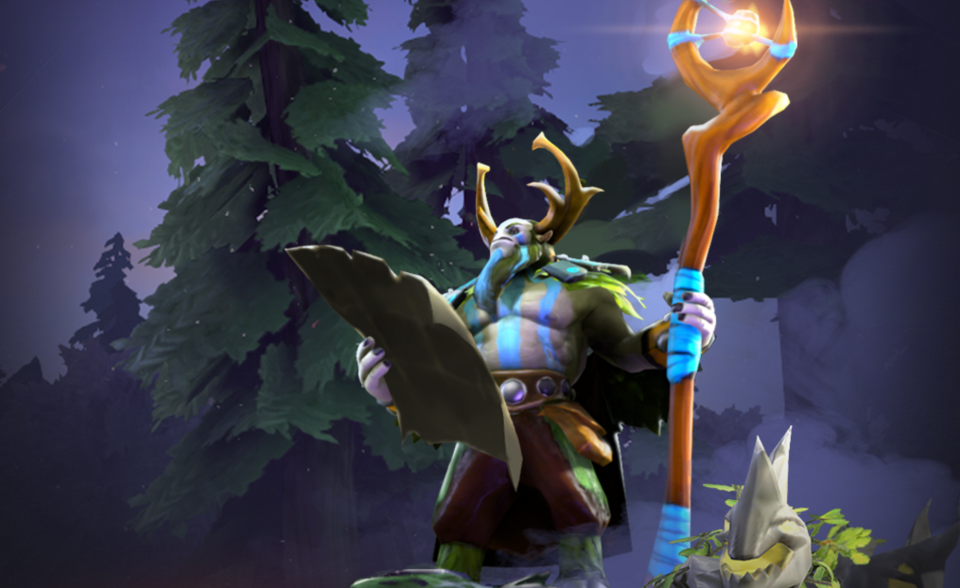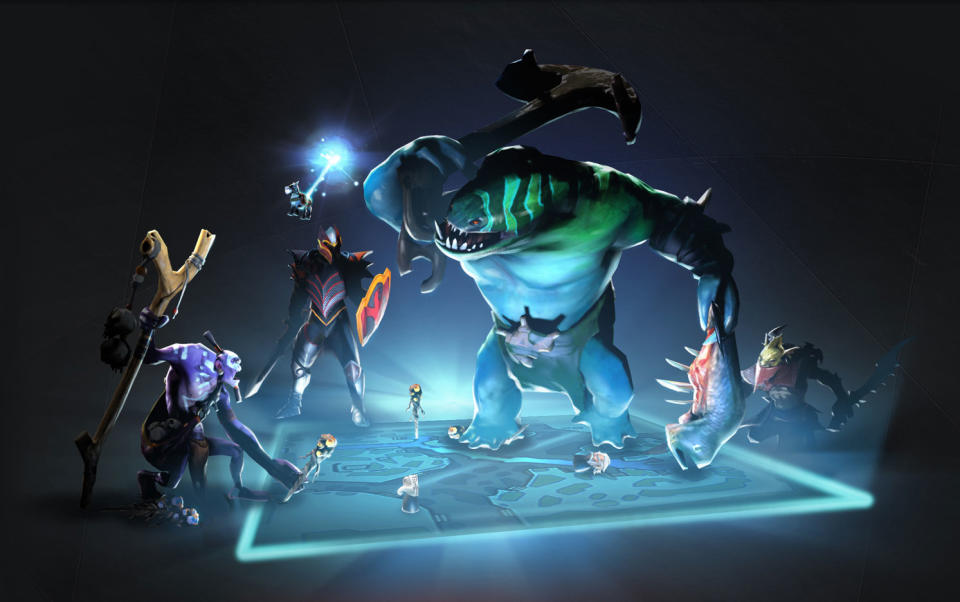The bugs and unintended mechanics that made Dota 2 great

Speak to a “traditional” game designer about Dota 2 and you’ll likely receive a couple of eye rolls. By most mainstream game standards, Valve’s flagship MOBA is filled with poor game design decisions and baffling mechanics. From a purely academic standpoint, Dota 2 should not work as a game.
And yet, it’s one of the most popular and well-regarded esports in history. Those weird, unintended mechanics and intricacies are what make Dota 2 the game it is today.
Thanks to Dota’s origins as a WarCraft 3 mod, a number of mechanics are a result of that game’s relatively old engine. Interestingly, when Valve decided to bring Defense of the Ancients into the modern era, they committed to bringing even the most obscure mechanics over into Dota 2.
These are three of the weird bugs, unintended mechanics, and otherwise goofy stuff that make Dota 2 the great game it is today.

Denying creeps
The act of murdering your own dudes for fun and profit doesn’t make much sense. Why would any new player think it’s a good idea to cut down a member of your own team, no matter how minor their impact on the overall game?
Well, as it turns out, it’s hugely beneficial from a strategic standpoint.
In Warcraft 3, you could attack your own units by attack-clicking on them. Sometimes, if a game went into the later stages, a player would have to do it just to clear out food resources to build more units. Not necessary in every single match of Warcraft 3, but definitely something worth sticking into the game. In fact, the mechanic is pretty standard in Blizzard RTS games.
When the original DotA was thrown together, supply concerns weren’t an issue. But the ability to kill your own dudes persisted. High-level players quickly realized how big of an advantage they could get by last-hitting their own creeps and denying their opponents experience and gold. At first, denying, well, denied every bit of gold and experience, leading to massive leads for the player that was better at it.
Rather than fight the Warcraft 3 engine, the original DotA modders just accepted it. They changed the way experience works, giving partial experience to anyone nearby a denied minion. Even with those nerfs, denying became a core element to laning in DotA, and remains essential to high-level play in Dota 2.

Stacking
The guys who made Defense of the Ancients weren’t professional game developers. They were modders taking the ideas presented by Aeon of Strife and its creator Aeon64. They were amateurs making a fun mode for the love of the game. They were Eul (the originator of the map) and a team of volunteers making DotA the best they could in their free time. Their solutions to problems weren’t terribly elegant or even very balanced. Most of the time, they just looked for the most efficient way to do things and moved on.
That’s how neutral stacking became a thing. Whereas later MOBAs had neutral camps spawning dynamically, depending on when they were cleared in the first place, things don’t quite work like that in Dota. (The two Buffs in League of Legends respawn five minutes after their deaths, for example.)
Rather than a dynamic respawn, neutral camps respawn every couple of minutes, just as long as there aren’t any units within the area. That means if an intrepid player pulls creeps away from a camp at just the right moment, they can get the camp to respawn without having to kill it beforehand. Do it correctly and it’s possible to stack a whole bunch of monsters in the same spot until they or their teammates are strong enough to kill them, resulting in a huge burst of gold for whoever manages to bring them all down.
At first, the ability to stack camps seems like a serious oversight. But over time, it’s become a necessary, vital way to obtain resources in the mid to late game. Someone just has to be willing to do it.

Blocking and pulling
One of the most important elements to a successful laning phase is controlling the equilibrium of where creeps meet. Most of the time, that means keeping the action as close to your own tower as possible to keep yourself in a safe spot to farm. Thankfully, thanks to the Warcraft 3 engine, there are plenty of ways to do that.
Due to the large hitboxes of units in WC3 (along with some weird pathing issues), it’s relatively easy to just stand in front of creeps and slow their inevitable march down the lane. That way, the opposing side has to deal with being mere inches from tower range, while the blocking side farms safe and sound under the umbrella of their own tower.
Alternatively, players can just send their own creeps to their demise in cold blood.
Creeps are bloodthirsty little monsters. If they see anything that they can fight, they’re going to start swinging. Enemy creeps, heroes, towers, whatever. Most importantly, they’ll try to brawl with whatever neutral creeps come into their line of sight.
Normally, the lane is too far from any jungle camps for the natural enemies to spot each other. But with a little finagling from a support, it’s possible to pull a pack of neutral camps close enough to the lane to trigger the creeps’ collective bloodlust. Do it successfully and two things happen: The enemy loses an entire wave’s worth of gold and experience and the support can last-hit the neutral creeps for extra gold. Not too shabby.
There are dozens of weird and downright broken mechanical holdovers in Dota 2 from its days as Defense of the Ancients, but these are just some of the biggest. But let’s not forget about the Tiny Avalanche/Toss combo, Bottle crowing, animation canceling, or tower aggro manipulation, among many others. All of those things come together to create the busted, wonderful game that is Dota 2.
Taylor Cocke misses Fountain hooks. Follow him on Twitter @taylorcocke.


